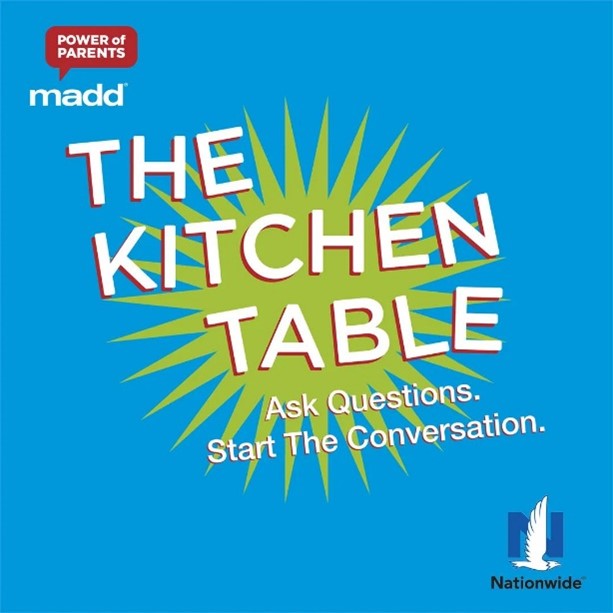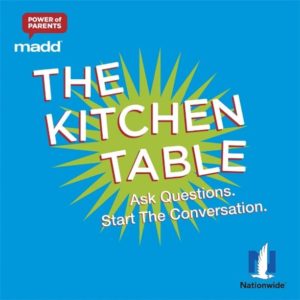The Kitchen Table- MADD will help you start the conversation


The kitchen table. It’s a location for family gatherings…a place to share emotional and physical sustenance…the spot where children tell their parents about what happened at school that day. And, after a tragedy, the table also serves as an all too painful reminder of those no longer seated around it.
That’s why MADD has been committed to ending impaired driving through victim services, public policy advocacy, and underage drinking and drug use prevention.
Join MADD and Nationwide during the months of August and September, while youth are returning to a new school year, as we encourage parents and guardians everywhere to start the conversations with their children about the dangers of underage drinking and drug use. Every Monday check back to see examples of questions you can use to start these conversations. madd.org/powerofparents #Nationwide #MADD #PowerofParents
Youth: Underage Drinking Statistics
- Underage drinking kills about 4,300 people each year.
- About 30% of 8th graders have tried alcohol
- Teens who do NOT drink alcohol until they are 21 are 85% less likely to become a drunk driver later in life than those who drink before age 14.
- Kids who start drinking young are seven times more likely to be in an alcohol-related crash.
- Teens who do NOT drink alcohol until they are 21 are over 80% less likely to abuse alcohol or become alcohol dependent later in life than those who drink before age 15.
- The brain is not fully developed until the mid-20s; alcohol can cause long-term damage to a growing brain.
- The 21 minimum drinking age saves about 800 lives per year
- Motor vehicle crashes remain the leading cause of death for youth 16 to 20 years of age.
- Adolescent drinkers perform worse in school, are more likely to fall behind, and have an increased risk of social problems, depression, suicidal thoughts, and violence.
- High school students who use alcohol or other substances are five times more likely to drop out of school or believe good grades aren’t important.
- More than a third of fatal motor vehicle crashes among people aged 16–20 involve alcohol
- From 2011-2015, alcohol was a factor in an average of 596 suicides, 1,000 homicides, 567 reports of death from alcohol- related poisoning, falls, burns, or drowning, and 1,072 deaths from motor vehicle crashes of people under the age of 21 each year.
- Even if no death occurs, teens can get seriously hurt by drinking alcohol. In 2011, 188,000 people under the age of 21 visited an emergency room because of alcohol-related injuries.
Youth: Marijuana Statistics
- About 1 in 10 marijuana users will become addicted. For people who begin using before the age of 18, that number rises to 1 in 6.
- Marijuana use directly affects the brain — specifically the parts of the brain responsible for memory, learning, attention, decision making, coordination, emotions, and reaction time, especially for those who start using as teenagers.
- Marijuana significantly impairs judgment, motor coordination, and reaction time. Studies have found a direct relationship between blood THC concentration and impaired driving ability.
- A review of 48 relevant studies found marijuana use to be associated with reduced educational attainment (i.e., reduced chance of graduating).17
- 1 in 3 youth who drink alcohol have also combined alcohol with marijuana on the same evenings. On these occasions, they tend to experience 2-3 times more problems compared to those when they only consume alcohol.
- Despite social distancing decreasing the number of opportunities for youth to get together in large groups, adolescents who had previously used alcohol and marijuana used MORE frequently since the pandemic began.
- 21.7% of high schoolers report having used marijuana at least once in the last 30 days. However, 36.8% reported having ever used marijuana at least once in their lifetime.
